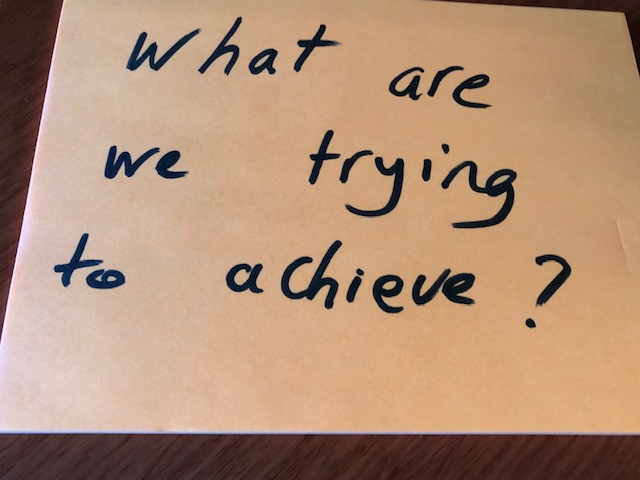What can be challenging about this skill is to be able to lead with abstract thinking instead of creating a solution before you can understand the potential scope of what you are dealing with. The difference between creating the problem statement and finding the optimal solution can be seen as strategy vs. operations. If you are operation-driven, you may be in the habit of basing your performance on quantity (how much we do); if you are strategy-driven, you want to “think first” before going into action so that you can ensure you are on the right direction and could create a new way of doing based on quality, leading to better outcomes.
If you fail to formulate the problem statement, you may aim at the wrong target or miss opportunities.
For instance, if you are running a call center and the customer wait time is getting longer, you may think right away that you need to hire more staff. But if you create a problem statement thinking about the customer calling in, you would write down the problem statement as “the wait time is longer than a customer may be willing to wait, leading to a frustrated customer who may want to hang up or stop doing business with us”. When you start there, you may want to explore many ways to reduce the wait time; hiring more staff to answer the phones would be one way but there may be technology options, such as starting an online chat that could be considered. This example may sound simplistic but is hopefully easy to grasp.
Here is another example: you may think you need to change your website homepage weekly so that users will want to come back because there is new content. The problem statement here starts with “we would like our web users to come back to the website more often than they do now and engage more with our content”. Once you start looking into data, you may find the homepage is not the most visited page or that the content you had in mind may not be the best way to engage your users.
An easy way to practice this skill is by always asking yourself the following key questions before starting a new endeavour:
- What are we trying to achieve? It is better not to answer in a specific manner (when we already think about operations and solutions) and try to stick to one sentence.
- How will we know we are successful? This question helps you project into the ideal state but skips the operational part of the solution so you can keep an open mind on how to get there. In the call center example, this may be a simple goal for your average wait time or survey data showing that your customers’s satisfaction about waiting has increased by X%.
Once you start practicing this skill, you will probably find out that we face problem statements on a daily basis but may ignore them as such because of our beliefs or biases. With increased awareness, you can build the skill to approach situations with a strategic mindset.


